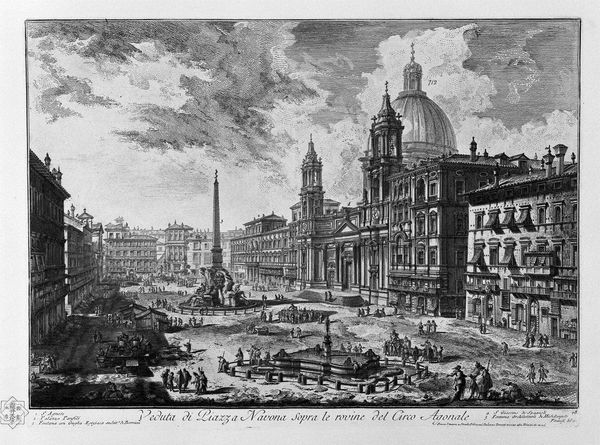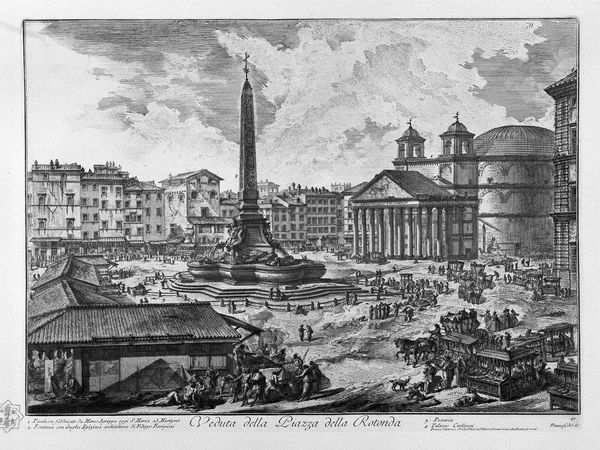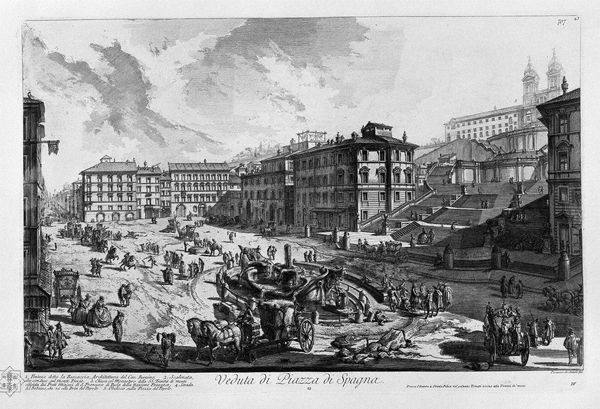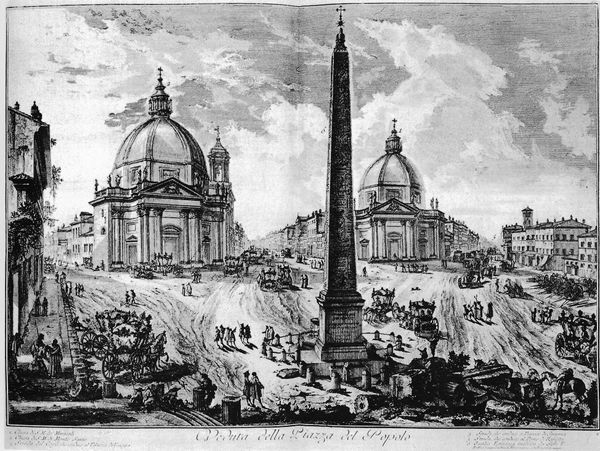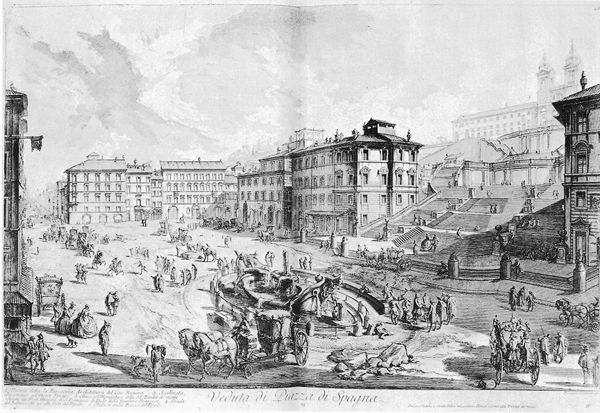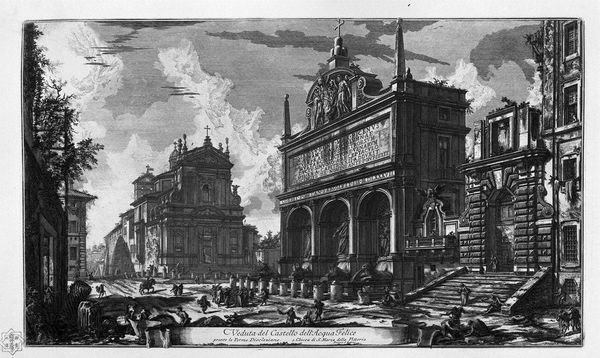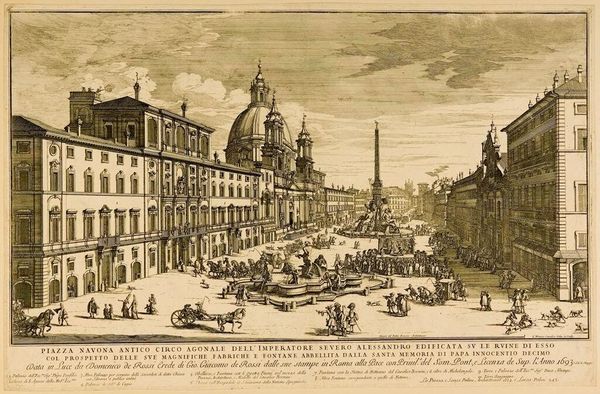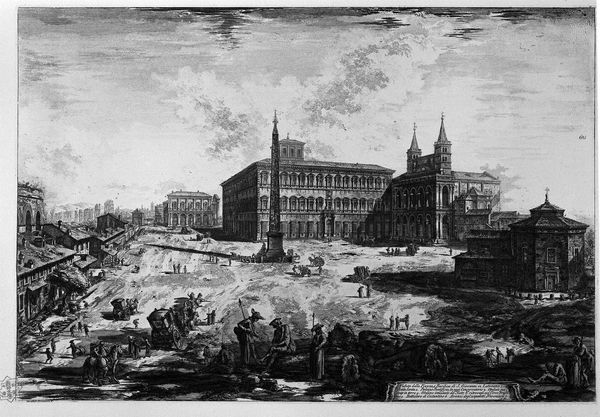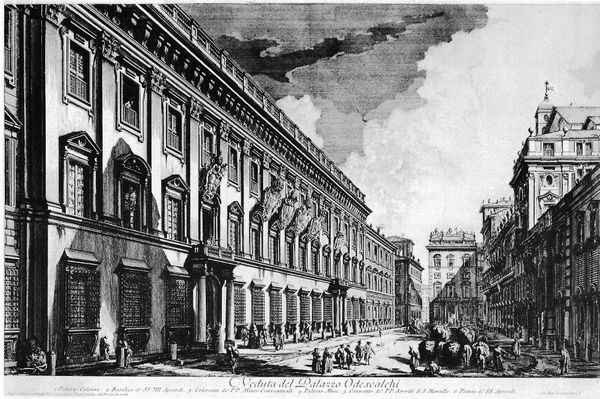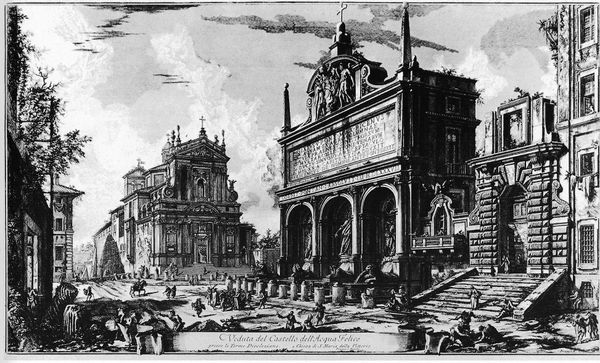
drawing, charcoal
#
drawing
#
baroque
#
charcoal drawing
#
city scape
#
cityscape
#
genre-painting
#
charcoal
#
charcoal
#
historical building
Dimensions: 85 cm (height) x 122.5 cm (width) (Netto)
Curator: Jacob Fabris's work, likely created between 1704 and 1761, invites us to witness "Piazza Navona in Rome during the Carnival." Fabris chose charcoal and drawing techniques to capture the vibrant scene, now held at the SMK - Statens Museum for Kunst. Editor: What strikes me immediately is the controlled chaos. Look at the sheer density of figures packed into that Roman square, all rendered in monochrome charcoal. There's a definite feeling of festive energy. Curator: Precisely! Fabris’s piece is particularly interesting because it portrays a significant public spectacle of the time. Carnivals in Rome weren't merely celebrations, but integral events that influenced political and social dynamics. It was a time for people, no matter their standing in society, to join together. Editor: You can almost feel the weight of tradition pressing on this "spontaneous" event. Who gets to play and how is always policed by these kinds of social structures, which would make the performative aspect incredibly coded for the people within the square. It is interesting how a medium such as drawing lends itself to record the fleetingness of carnival. Curator: The artist definitely seems interested in portraying the architecture as the backdrop, and he shows Piazza Navona almost like a theater. And the inclusion of various social classes mixing—or at least appearing to mix—during Carnival underscores the event's social function as a brief equalizer, albeit temporary. Editor: Absolutely. This representation offers an idyllic portrayal. What is carefully concealed is likely the darker underbelly of class tensions, gendered roles, and the inherent power imbalances that dictated daily life. Curator: Viewing it from an institutional lens, we also need to consider that drawings and prints like this one functioned as visual documents, disseminating images of Rome and its traditions across Europe, thus playing a role in shaping perceptions of Roman identity and cultural power. It also offered visitors coming from the North another attraction to witness. Editor: Looking closely at the textures, and recalling this event as documented through various socio-political forces—it makes me think about the narratives that were emphasized versus what was obscured in these grand public spectacles. It reveals how spectacle is constructed to serve specific purposes of control and cohesion. Curator: It gives you a lot to think about regarding the role of art in depicting societal structures and the ephemeral moments when those structures seem momentarily suspended, wouldn't you agree? Editor: Definitely, the Carnival and its representation both invite us to engage with what’s made visible—and what’s purposefully kept in shadow. It leaves me pondering not only what the work depicts, but what is left unsaid about the rituals and celebrations themselves.
Comments
No comments
Be the first to comment and join the conversation on the ultimate creative platform.

